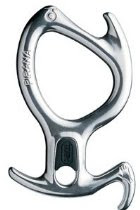Like Training programs that are based upon maximum heart rate, Anaerobic threshold (AT)-based training zones are relative to varying levels of intensity, each of which serves different training objectives. Each of these zones develops essential physiological functions that contribute to good health and improved fitness, especially the possibility of weight loss. So you should never limit your training to a single metabolic zone, although you may exercise predominantly in one zone for a given time in order to reach specific training objectives.
Except for rank beginners or people with health related limitations, all levels of intensity are appropriate to ensure maximum cardiovascular development and results. How much and how often you work in each zone will depend on your athletic goals and your current level of fitness (continue reading for a more detailed description of the zones and their primary applications).
Let's look at the volume of the different zones that should be performed weekly. As a rule of thumb, 60 to 65 percent of your total workout time should focus on Zones 1 and 2; 30 to 35 percent on Zones 3 and 4; and about 5 percent on Zone 5. But you need not incorporate all zones into a single workout. In fact, you'll get better results from designing a range of different workouts throughout the week - including long, easy ones in Zones 1 and 2, and shorter, tougher ones that occupy more time in Zones 3, 4 and 5.
ZONE 1: Warm-up Heart-rate range: 60 to 70 percent of AT.
Training objectives: Encourage blood flow and burn fat.
What's happening: This is almost a pure aerobic state, which you can maintain almost indefinitely without experiencing any rise in blood lactate.
Feeling: Comfortable to talk and breathe through your nose.
How long: 10-minute warm-up progressing to higher intensity zones for 45 minutes or longer. Depending on your fitness level, you may need to start with a shorter workout and build up to 45 minutes, or do several shorter workouts throughout the day.
Zone 1 basics: This is a good place to launch your fitness program if you are a beginner or returning to exercise after taking off several months or more. It develops basic exercise technique, endurance and an aerobic base. Ideally, if you are new to exercise, or returning to training after a long break, you should stay in Zone 1 for about six weeks before moving up in zones. Zone 1 is also a good place to recover from tougher workouts.
ZONE 2: Aerobic Development
Heart-rate range: 70 to 90 percent of AT.
Training objectives: Build aerobic efficiency and maximize fat burning at a higher caloric rate.
What's happening: A small rise in blood lactate occurs, yet the body can process it without buildup.
Feeling: You can still converse and may have the urge to go faster. Breathing deepens a bit.
How long: 30 minutes (beginner); 90 minutes or longer (advanced).
Zone 2 basics: Before developing your lactate tolerance or increasing your AT, you should fully develop your "aerobic base," and this is a great zone for moving that effort forward. Noticeable improvement in this zone generally takes about six weeks of consistent training. But don't worry: As you become more efficient and fit, you'll be able to work out faster in every zone. For fit people, Zone 2 is also a good place for active recovery.
ZONE 3: Aerobic Endurance Heart-rate range: 90 to 100 percent of AT.
Training objectives: Increase endurance. Here, you push your AT up to higher intensity by training your body to tolerate more lactate in the blood.
What's happening: As intensity increases, not all lactate produced in the cells can be shuttled back into the metabolic cycle. Lactate levels in the blood begin to rise and, with time, fatigue sets in.
Feeling: Breathing becomes noticeable, but not too difficult; conversation is restricted to short sentences.
How long: 20 minutes (beginner); one hour or more (advanced).
Zone 3 basics: Building endurance at your AT through long intervals (four to 10 minutes) at threshold range will help raise your AT and slowly develop your body's tolerance of lactate. This training adaptation also allows your body to burn fat more efficiently. The idea here is to rest between intervals with your heart rate recovering in your aerobic zone and then increase intensity again up to your threshold.
ZONE 4: Anaerobic Endurance Heart-rate range: 100 to 110 percent of AT.
Training objectives: Increase athletic ability by improving lactate tolerance. Here you're pushing AT and VO2 max (your body's highest ability to utilize oxygen), challenging the heart to work longer, and increasing cardiac output (more blood is being pumped with each stroke, thus requiring fewer strokes per minute).
What's happening: Your body switches into primarily using glycogen or carbohydrate to fuel its need for energy, and your blood-lactate levels dramatically increase.
Feeling: Breathing becomes heavy, difficult and uncomfortable. You may also experience "muscle burn" because of lactate buildup.
How long: Five minutes (beginner); 30 minutes (advanced).
Zone 4 basics: Run at an aerobic pace, then speed up or increase resistance until your heart beats at 110 percent of your AT range. Maintain this level for one to four minutes. Reduce the pace until your heart returns slightly below AT, but not completely back to the aerobic zone. Then repeat the interval.
ZONE 5: Speed and Power Heart-rate range: 110 percent of AT to MHR.
Training objectives: Increase athletic ability by improving neurological response, exercise mechanics, speed and muscle power.
What's happening: Your body is burning the last remaining fuel (glycogen) in your muscles and cannot sustain this maximum effort for more than a few seconds without succumbing to exhaustion.
Feeling: Extremely difficult and uncomfortable. You'll feel breathless and may hear pounding in your chest. You'll feel an intense desire to slow or stop.
How long: Typically several seconds.
Zone 5 basics: Your work here consists of sprints and very intense, short intervals (up to one minute). Although you can come in and out of Zone 5 several times during the course of a single workout, spending more than 10 percent of your total workout time in this zone increases your risk of injury. If you've done a significant amount of Zone 5 work, be sure to add recovery time (meaning a day or two of rest or working in Zones 1 and 2) before returning to Zones 4 and 5.
Progress Makes Perfect By using your AT as a marker for aerobic exercise, you can base your training on a highly individualized fitness parameter, without having to guess about percentages of MHR. This lets you take advantage of every exercise session, knowing you are making the most of your time and energy. And as your fitness improves, so will your AT - one of the best indicators of cardiovascular health, fitness and overall vitality.
Live Lean Today offers professional online fitness trainer programs and great deals on products from Scifit and more.






